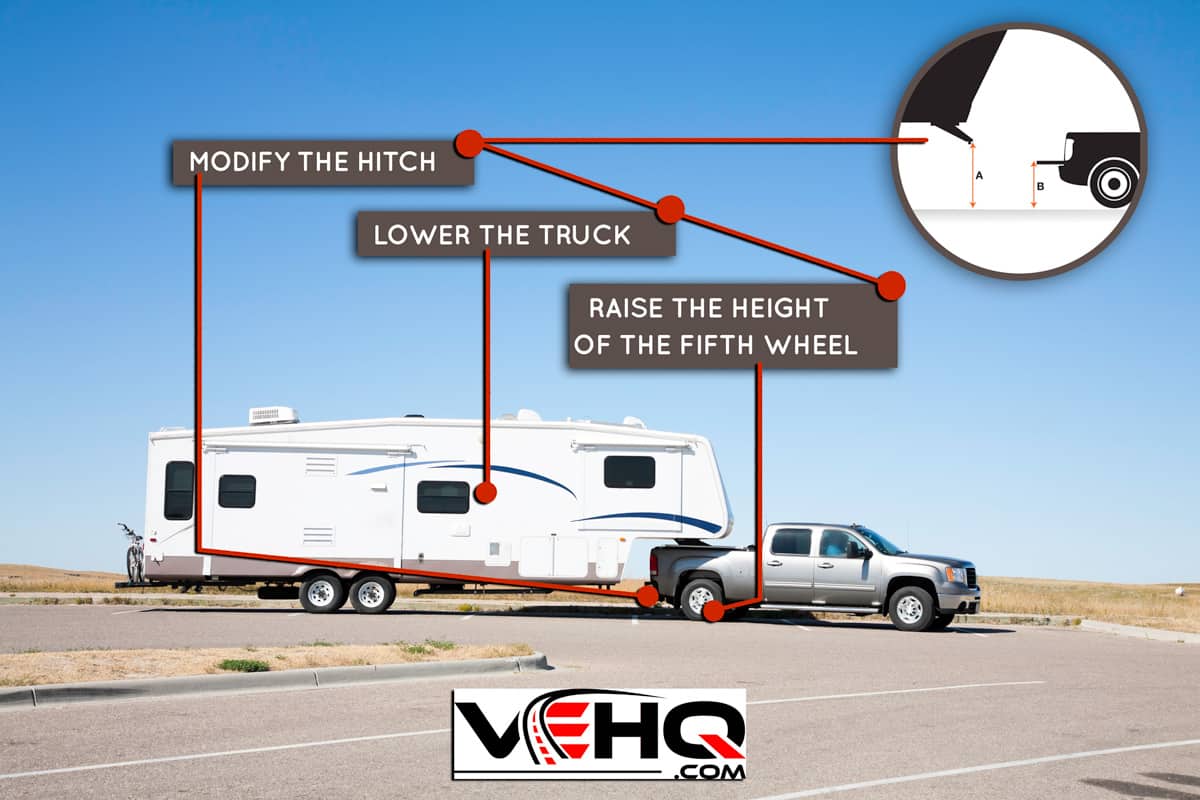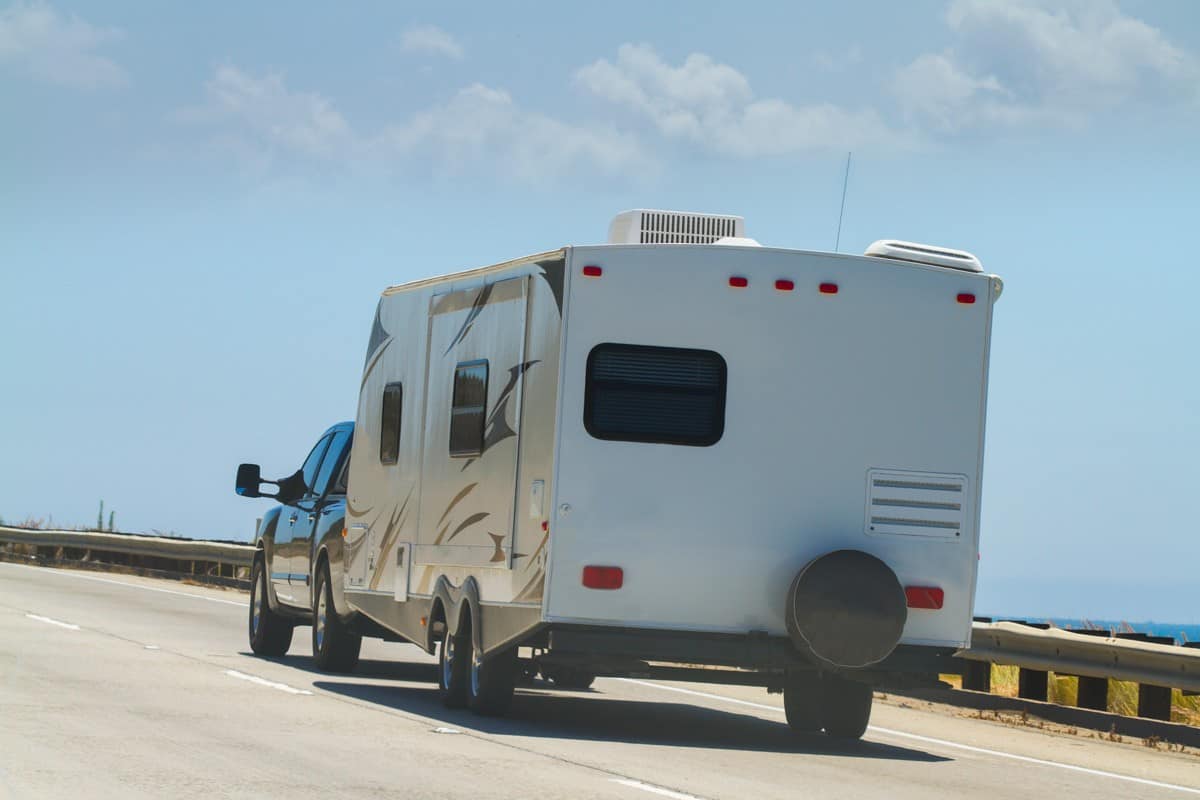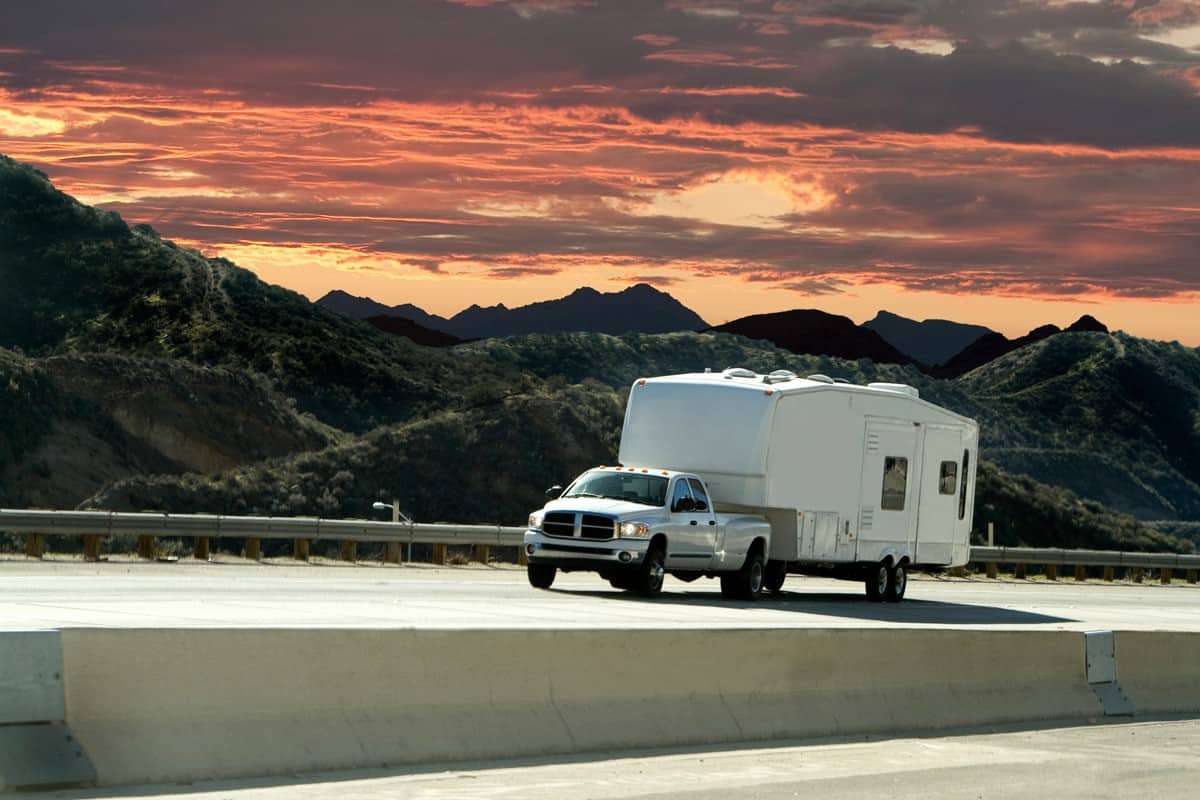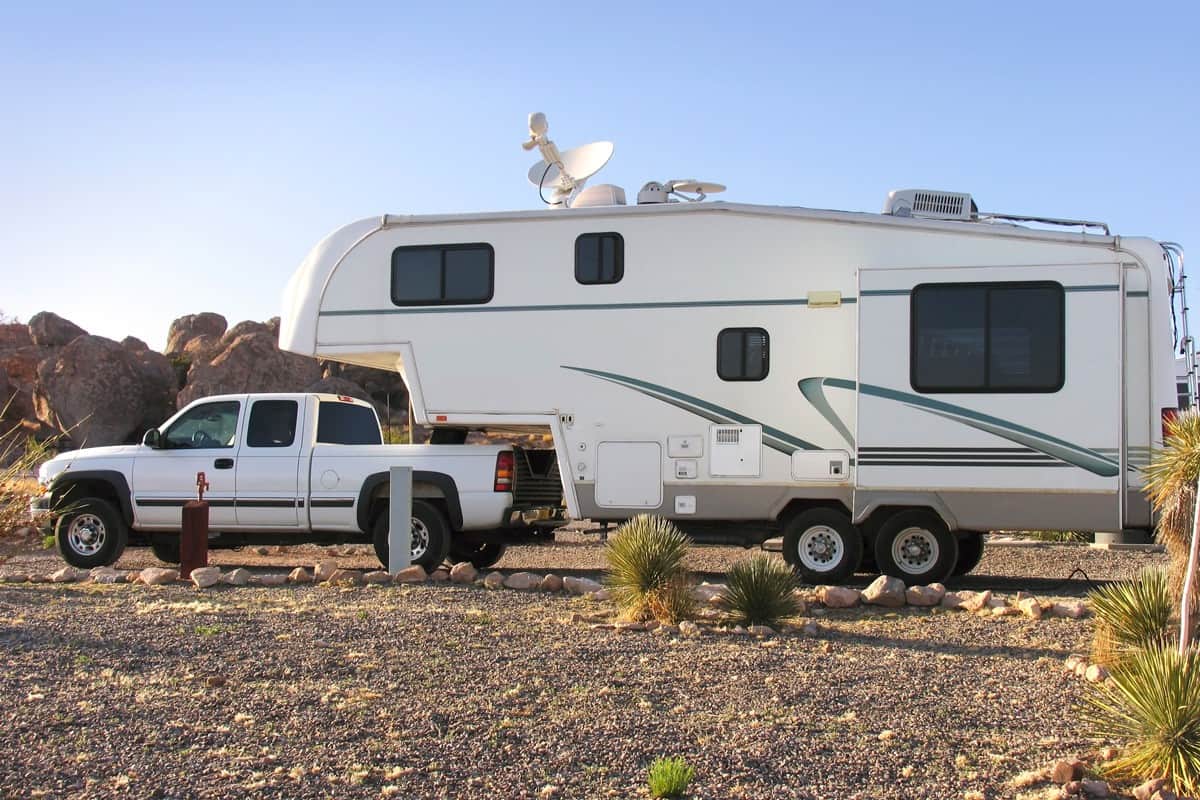Pairing your truck with the right fifth wheel can take a bit of time, but you'll want to make sure that you get the correct fit. As trucks vary in height, so do the campers they are meant to pull behind them. If you are wondering if your truck might be too tall for a fifth wheel, we can help you. We researched towing fifth wheels in detail so that you'll be sure if your truck will work.
Ideally, you will want a minimum of six inches of clearance between the top of your truck bed's sidewalls and the bottom of the fifth wheel's overhang. If your truck sits too high to get this amount of room between the two, then you will have to one of the following:
- Modify the hitch
- Lower the truck
- Raise the height of the fifth wheel
Now that we know what measurements you shouldn't exceed, we'll look at how you can usually make corrections so that your truck and fifth wheel are more compatible. You might also be wondering if you can pull a fifth wheel with a six-foot bed or how big of a truck you'll need to pull one of these campers. For the answers to these questions and more, read ahead in this post to see what our research has uncovered.

How To Ensure Your Truck And Fifth Wheel Properly Align

Bigger passenger trucks might be a little too high to be able to tow some model fifth wheels. And while you can't always make the modifications to correct the situation, you'll find that a majority of the time there's a way to make your truck and fifth wheel in sync with each other.
Earlier, we listed the three ways that this can be accomplished. Let's take a more detailed look at each one so that you'll know what you will need to attempt to safely tow your camper.
Modify The Hitch
Fifth wheel hitches can be altered to raise or lower their height. In doing so, you'll be able to hopefully raise the fifth wheel enough to get that minimum of six inches of clearance.
If your current hitch won't do the trick, you might consider upgrading it to a bigger model.
Lower The Truck
Many pickup truck models can have a lowering kit installed to decrease the height. A proper kit will lower the rear end by two to three inches, which may be enough to make your fifth wheel ride the six-inch minimum above the bed rails.
Carefully measure where the trailer overhangs into your truck bed. If this amount is within a few inches, you might consider the lowering kit. But there might be reasons why you would want to keep your truck as high off the ground as it was manufactured. If this is the case, focus on the height of the fifth wheel instead.
Raise The Height Of The Fifth Wheel
Lastly, you can always raise the height of the fifth wheel so that it is more in line with the height of the pickup truck. An over/under conversion kit will transfer the trailer's leaf spring stack to the top of the axle, which raises the fifth wheel.
It's more work, but installing taller hangers will also help bring your fifth wheel to the proper height.
Can You Pull A Fifth Wheel With A Six-Foot Bed?
When towing a fifth wheel, you will need to make sure that there is enough room in the bed of the pickup for the hitch. If the hitch sits too close, the fifth wheel and truck will not be properly spaced apart. This will make tight turns treacherous.
If you have a six-foot bed, you'll find that a traditional gooseneck hitch does not provide adequate distance between the truck and the fifth wheel. However, there is a way to make this shorter bed work.
A slider hitch can be installed in the bed of your pickup. When you make sharp turns at low speeds, this carefully slides the trailer back over the furthest point in the bed from the cab, ensuring that the trailer will not collide with the cab.

How Big Of A Truck Do You Need To Pull A Fifth Wheel?
If you are considering hauling a fifth wheel behind you, many models will require a powerful pickup truck or full-sized SUV.
But there are still many fifth wheels out there that are lighter in weight and able to be towed by medium-sized trucks. So, it's not a matter of how big of a truck you need as much as it is how big the fifth wheel can be for your particular pickup.
You'll want to pay close attention to several important weights when it comes to towing. Exceeding these weight limits will result in great damage to your truck and your fifth wheel as well as expose you and others to physical harm.
Let's take a look at these weights, what they mean, and how they indicate whether or not your particular pickup can pull certain fifth wheels.
Payload Capacity
The payload capacity of your vehicle refers to the combined weight of all passengers and cargo.
Gross Vehicle Weight Rating
Gross vehicle weight rating (GVWR) is the total weight that your truck can be to safely operate. This is a combination of the vehicle's curb weight (how much it weighs when it's empty), plus the weight of all passengers and cargo. In addition, the amount of weight put on the tongue (trailer hitch) would be included.
For example, let's say you are driving a 2021 Ram 1500 Tradesman. It has a GVWR of 7,100 pounds. The curb weight of this truck is 4,800 pounds, leaving you with 2,300 pounds to distribute between passengers, cargo, and tongue weight.
If your passenger load is five adults and their combined weight is 1,000 pounds, does that mean you can only haul a fifth wheel that weighs less than 1,300 pounds? Not at all. To explain this, we need to know how tongue weight works.
Tongue Weight
The amount of weight on the tongue is ideally between 10 and 15 percent of what you are towing. So, if we use the above example, the added tongue weight could be as much as 1,300 pounds.
This would mean that the truck could tow a fifth wheel that weighs 13,000 pounds as long as its gross combined vehicle weight rating was suited for it.
Gross Combined Vehicle Weight Rating
The towing capacity can be calculated once you know the gross combined vehicle weight rating (GCVWR). This number is the total weight (curb weight, passenger/cargo weight, tongue weight) of the towing vehicle plus the total weight of the trailer and its contents.
Subtract the curb weight from the GCVWR and you'll have the towing capacity of the vehicle. Of course, this number is its maximum capacity. You will further need to subtract the weight of all passengers and cargo on board your truck to get the available towing capacity.

What Happens If I Exceed Towing Capacity?
You'll want to pay close attention to how much weight your vehicle can safely tow. If you exceed its capacity, you will put yourself and others in danger. You will also risk damaging your truck and fifth wheel.
Hauling too much weight will strain the engine, transmission, and radiator. The hotter these parts get, the more wear they endure. Towing more than they are built for will greatly reduce their useful life.
You also run the risk of your fifth wheel becoming detached. Additionally, turning and braking will be much more difficult. These items combined increase the likelihood of an accident.

Final Thoughts
Most trucks will be able to accommodate most fifth wheels. Sometimes you might need to modify the height of one or the other, however. Pay close attention to your truck's capacities to avoid injuries and damage to your vehicles. Drive safe!
We hope this post on fifth wheels answered all of your questions. For additional information, we recommend reading the following posts:
13 Fifth Wheel RVs With A Front Living Room [Illustrated Examples]
Do You Need A Diesel Truck To Pull A 5th Wheel [Including 5th Wheel & Pick-up Models]
